Kuiper Belt —
A NASA spacecraft has sent back pictures of the object farthest away from earth that humans have ever seen. The object is 21 miles (34 kilometers) long, reddish in color, and looks a bit like a snowman.
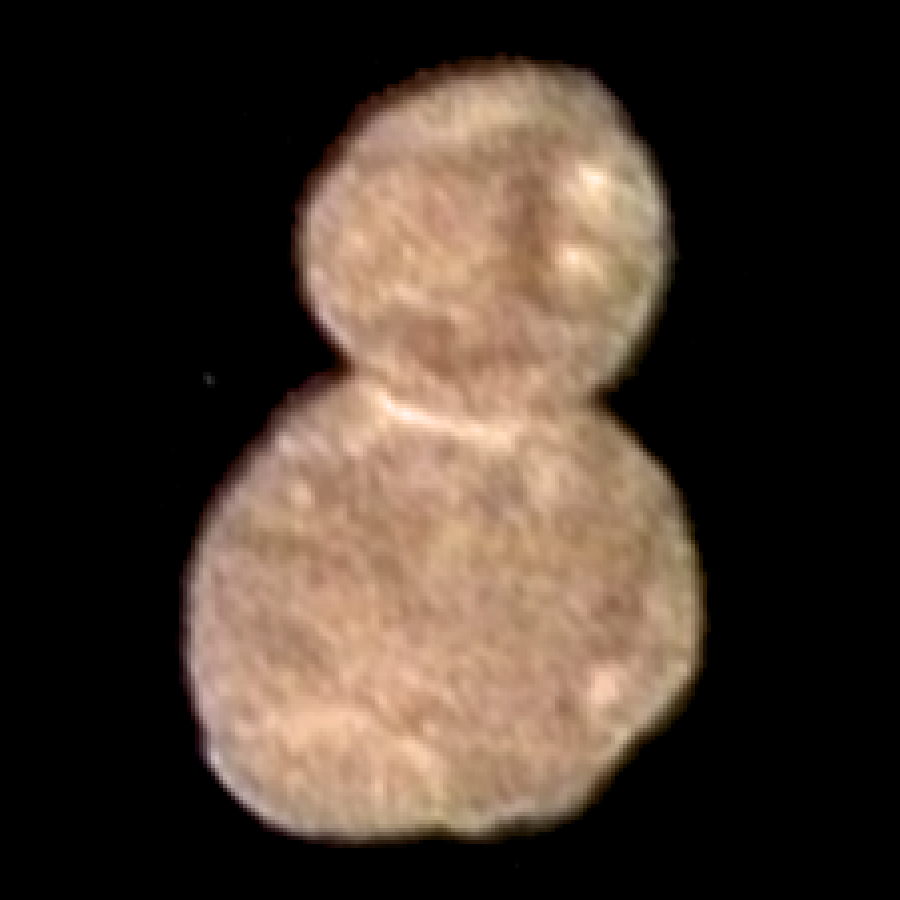
(Source: NASA/JHUAPL/SwRI, via Wikimedia Commons.)
The NASA spacecraft, called “New Horizons”, left Earth in 2006. It has been traveling away from the Sun for the last 12 years. It is now a billion miles past Pluto at the outer edges of our solar system – the system of planets and smaller objects that go around our sun.
New Horizons is in an area called the Kuiper Belt. The Kuiper Belt holds smaller bodies left over from the beginning of our solar system. These “bodies” may have some rock, but are often made mainly of icy frozen gases.
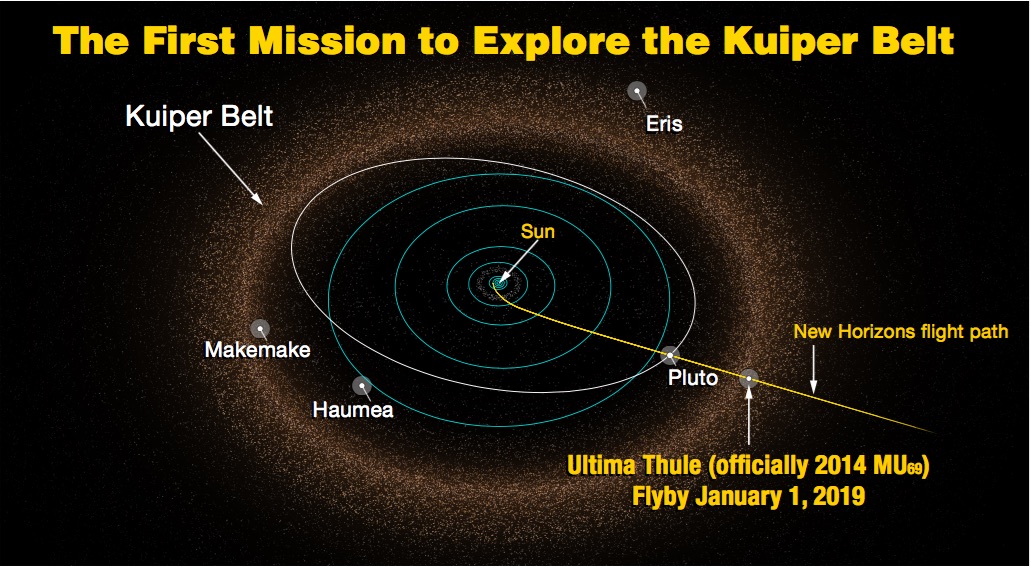
(Source: NASA/JHUAPL/SwRI.)
Scientists think Kuiper Belt Objects (KBOs) have not changed much since our solar system started and may tell us much about what things were like 4.5 billion years ago before planets formed.
When New Horizons left Earth, scientists knew it would visit Pluto, but they didn’t know where it would go afterward. In 2014, scientists discovered a very small minor planet in the Kuiper Belt, which was given the official name “2014 MU69”.
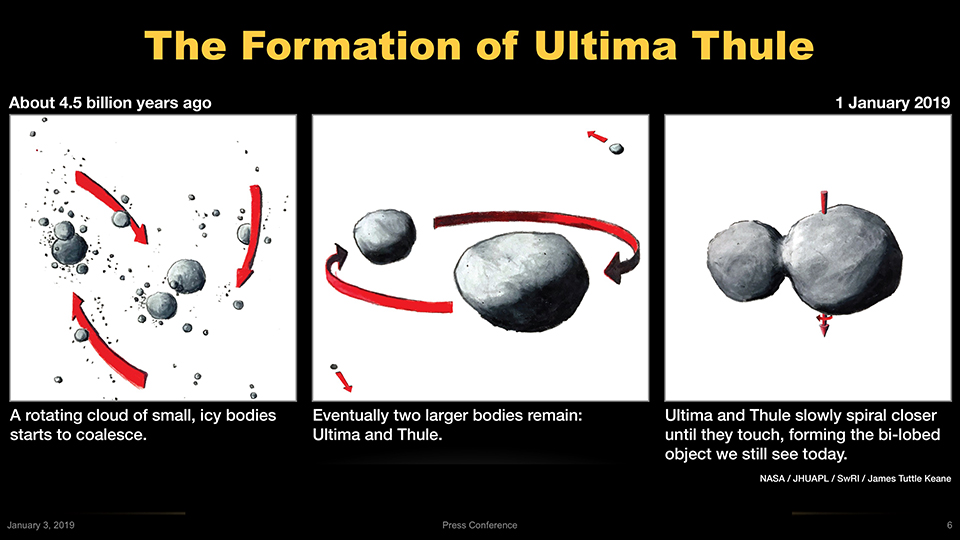
(Source: NASA/JHUAPL/SwRI.)
Scientists could tell that 2014 MU69 was made of two smaller bodies that came together at slow speed and got stuck together. This is called a “contact binary” and is what makes it look like a snowman.
NASA held a naming contest, and the nickname “Ultima Thule” was given to 2014 MU69. One part is named Ultima and the other is called Thule (said “too-lee”). The name has a long history and means “beyond the known world”.
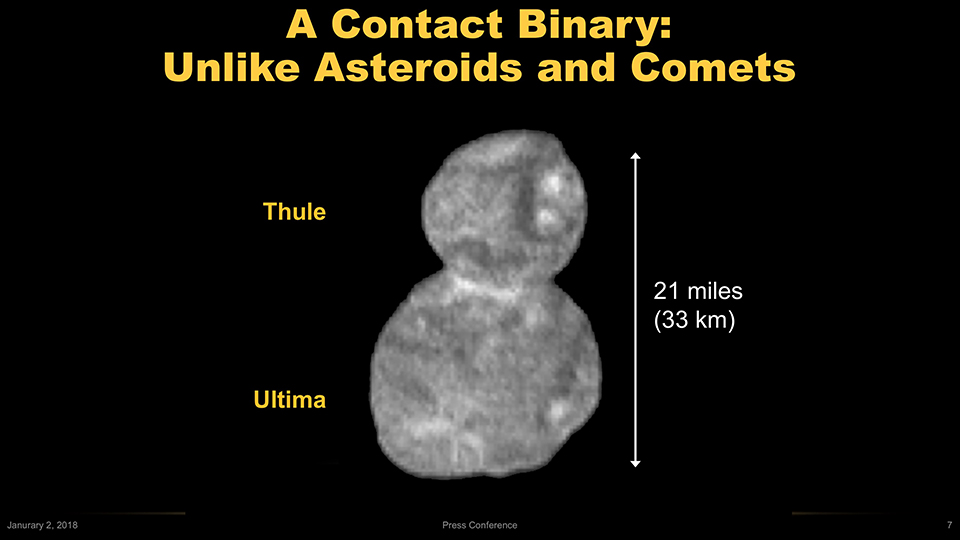
(Source: NASA/JHUAPL/SwRI.)
It is hard to understand how far away Ultima Thule is. The Sun is about 93 million miles (150 million kilometers) away from Earth. That’s a long way. New Horizons is 44 times as far away in the other direction.
Studying Ultima Thule was not easy. It is nearly dark in the Kuiper Belt because the Sun is so far away. Ultima Thule is not large and not very bright. But the hardest part was that New Horizons was about 18,000 miles (28,000 kilometers) away and traveling at 32,000 miles per hour (51,500 kilometers per hour) as it studied Ultima Thule.
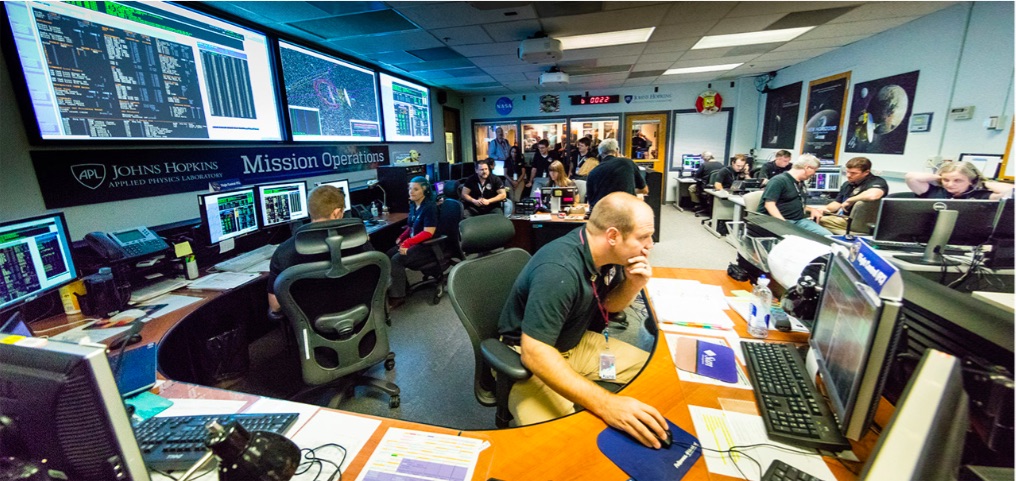
(Source: NASA/JHUAPL/SwRI.)
Even though New Horizons passed quickly, it will take 20 months for New Horizons to send all of the information it collected about Ultima Thule back to the New Horizons team on Earth. Two other groups are working with NASA on the project: Southwest Research Institute and Johns Hopkins University. After the team learns more about 2014 MU69, they will suggest a new, permanent name.
New Horizons has enough fuel to keep traveling through the Kuiper Belt for 15 to 20 more years. In 2020, the New Horizons team hopes to suggest a new target for the spacecraft to explore.
